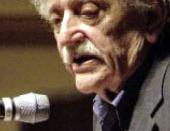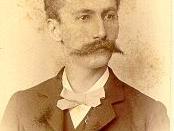Slaughterhouse-Five by Kurt Vonnegut was published in 1969 by Dell Publishing and has been regarded as one of Vonnegut's best works. The novel is a blend of two narratives. The first is that of Kurt Vonnegut. In the first chapter he tells us that he has wanted to write a book about the firebombing of Dresden for some time and also about his efforts to do so. Vonnegut can be seen popping in a couple times in the middle chapters, but more so in the tenth and final chapter where his views come right out. The second narrative is the story of Billy Pilgrim, who is seemingly a literary clone of Vonnegut. Billy enlists in the army during World War II, battles on the European front, gets captured by Nazi forces, and witnesses the firebombing of Dresden as a POW. Billy's story is told in an unusual fashion.
He has an ability to become "unstuck in time." This means he uncontrollably jumps to any period of time in his life; past, present (If there is one.), or future. The book is written similarly to how Billy lives; there is no chronological order. Billy slips from the war, to his childhood, to his death, to Dresden, and every other part of his simple, war-torn life. The reader is simply given the story piece by piece, period of time by period of time with the entire story being in the past tense. It is this unusual fashion that Vonnegut uses to get his messages across. He also repeats the word "listen" throughout the book as if the novel is one large lecture and he is trying to explain its themes: The role of and acceptance of fate in life, and the inhumanity and destructiveness of war.
The theme "The role...


